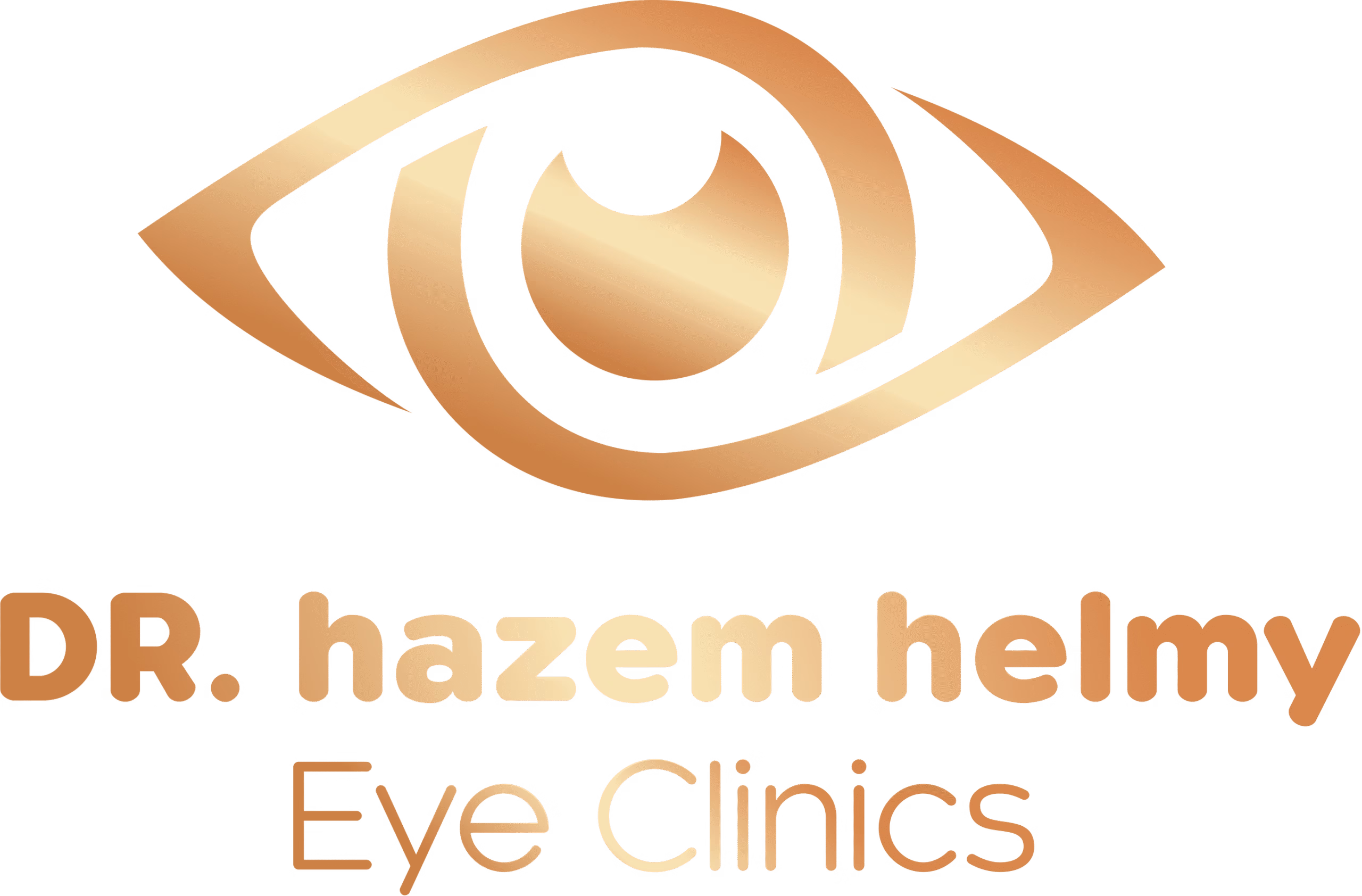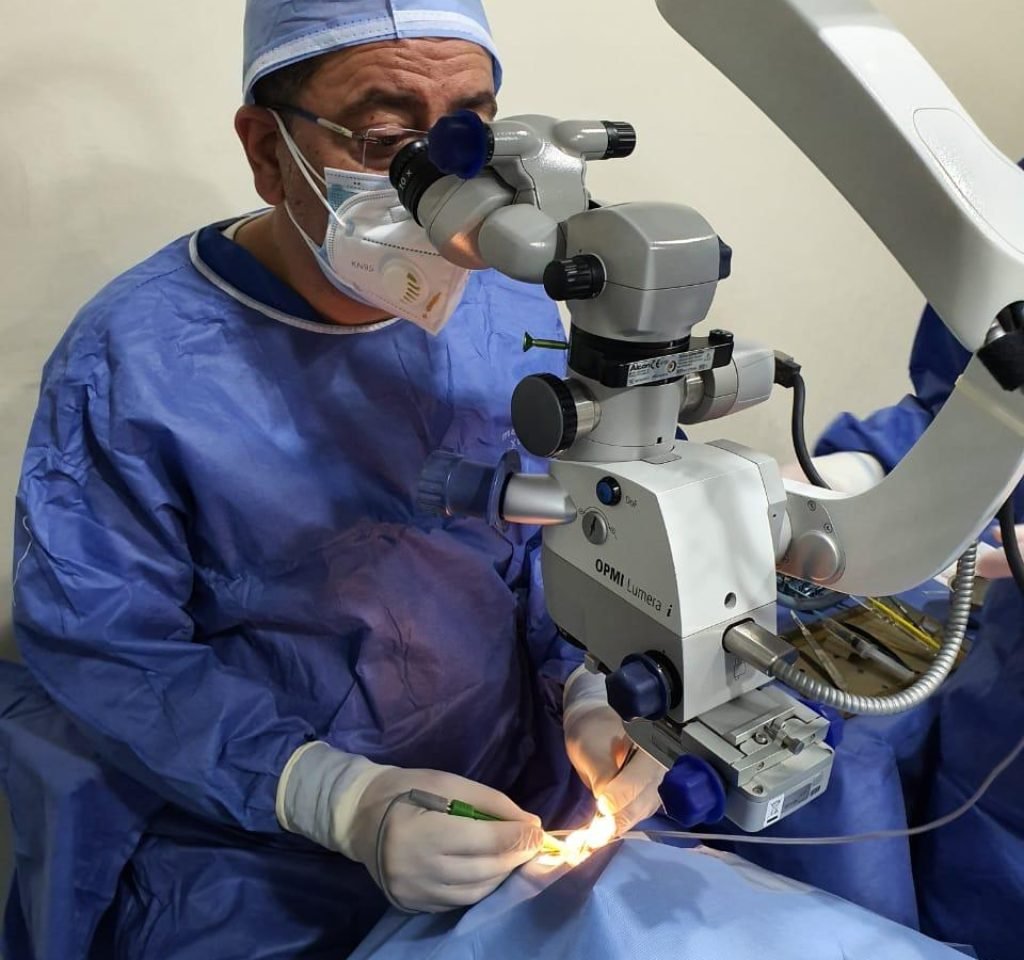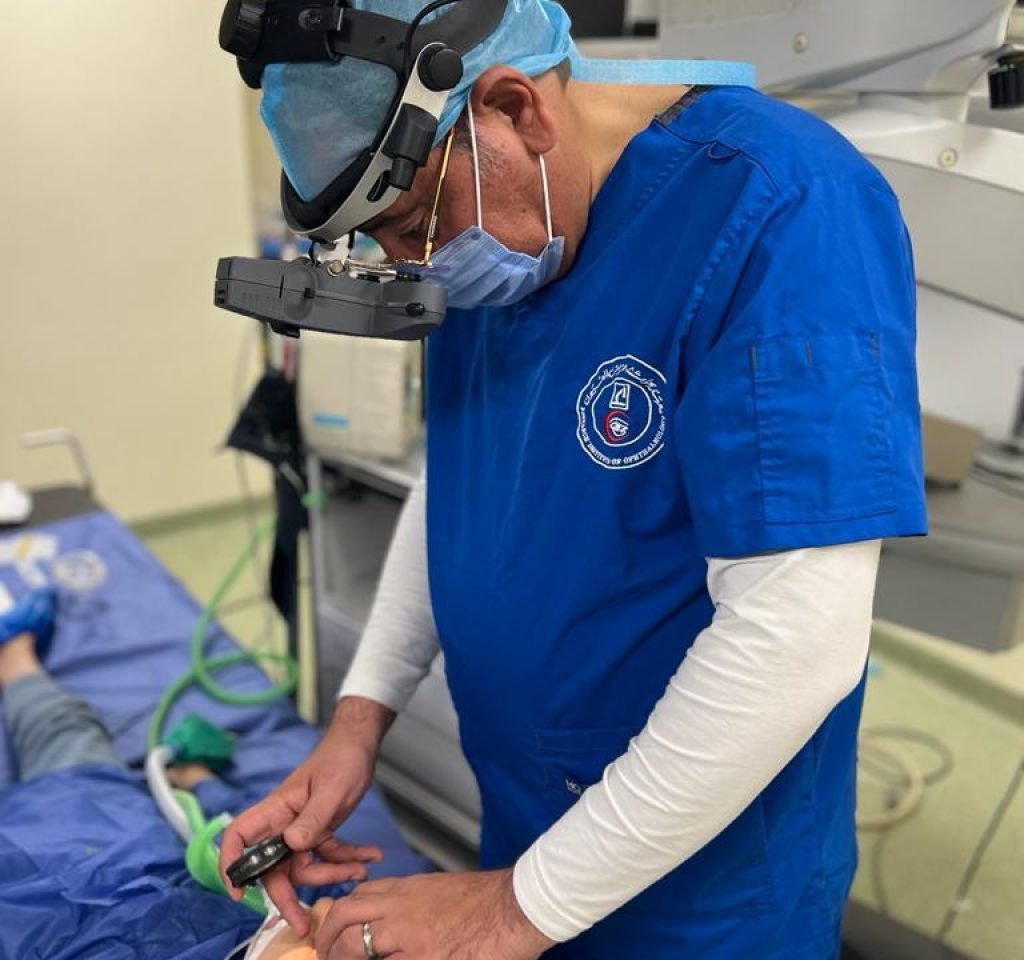
Valve implantation surgeries in difficult blue water
Valve implantation surgeries in difficult blue water cases :
In some cases of glaucoma that is advanced or resistant to treatment, conventional drug treatments or surgeries are not sufficient to adjust the intraocular pressure. In these cases, prepare Valve implantation surgeries One of the most effective and safe solutions for preserving the optic nerve and preventing vision loss.
When to resort to implantation of a valve in the eye
Valve implantation surgeries are recommended in the following cases:
Glaucoma resistant to drug and surgical treatment
Cases of previous unsuccessful eye surgeries
Glaucoma associated with corneal transplants or retinal detachment
Glaucoma in patients with recurrent infections or complicated conditions such as Vascular glaucoma Or Severe congenital
What is an eye valve And how it works
The glaucoma Valve is A precision device implanted inside the eye, Allows excess fluid to drain from the inside of the eye into a small reservoir implanted under the conjunctiva of the eye (white outer membrane), which helps to safely and stably reduce intraocular pressure.
The most popular types of valves used:
Valve Ahmed (Ahmed Valve)
(Baerveldt Valve)
Molteno valve (Molteno)
The steps of the process with Professor Dr. Hazem Helmy
Thanks to his specialized experience, Dr. Hazem Helmy performs valve implantation surgeries using Precision microscopy techniques And under the supervision of safe anesthesia, with special care to protect the eye from any complications.
Surgery steps in a nutshell:
Local or general anesthesia depending on the patient's condition
Inserting the valve in a precise place behind the eye
Installing the drain pipe inside the anterior chamber of the eye
Cover the tube with vital substances to protect it from irritation
Carefully close the eye and monitor the intraocular pressure after the operation
Advantages of implantation of glaucoma valves
✅ Effective control of intraocular pressure in difficult cases
✅ Reduce the need to use medicines daily
✅ Suitable for cases that do not respond to conventional treatment
✅ Long-term results, God willing
How successful is the surgery
🔹 It is one of the most successful means of adjusting intraocular pressure in complex cases, especially when performed by a specialized surgeon such as Dr. Hazem Helmy.
Can the pressure return to rise after a while
🔹 Some patients may need Regular monitoring Or an adjustment in drug therapy, but the valve usually provides long-term control of intraocular pressure.
Do you have advanced glaucoma or are you not responding to treatment
Do not wait until the vision deteriorates, book a consultation with Professor Dr Hazem my dream To accurately assess your condition and choose the right treatment for you.
Frequently asked questions
The latest technologies used in the treatment of cataracts and glaucoma rely heavily on improving accuracy and reducing the risks associated with conventional surgeries. The following are the most prominent of these technologies:
- 1. Cataract treatment:
- Femto-laser (Femtosecond Laser): femtosecond laser technology is used to create a small hole in the cornea, and then the blurry lens is atomized using high-precision laser beams before being sucked and removed. This method is considered among the most accurate and safe compared to traditional methods.
- Phaco apparatus (Phacoemulsification): this technique is based on ultrasound to break up the cataract lens and remove it through a very small incision (about 2-3 millimeters), which helps to speed up the recovery process and reduce complications.
- Smart lensesAfter removal of the affected lens, advanced artificial lenses such as multifocal Lenses (Multifocal Lenses) or adaptive lenses (Accommodative Lenses) are implanted, which provide clear vision at various distances (close, medium, far).
- Treatment of glaucoma:
- Precision dual-pulse laser (Micropulse Diode Laser): This device is one of the latest means used in the treatment of glaucoma, as it improves the drainage of intraocular fluid without the need for major surgery, which helps to effectively reduce intraocular pressure .
- Technical Trabeculoplasty: This technique uses a laser to stimulate the drainage of intraocular fluid, which is a quick and effective way to relieve pressure on the optic nerve.
- Liquid drainage surgery (Trabeculectomy): In severe cases that do not respond to laser therapy or medications, surgery is performed to drain the intraocular fluid to permanently relieve pressure.
- Implanted liquid drainage devices (Glaucoma Drainage Devices): Small intraocular devices are implanted to improve fluid drainage and continuously lower pressure.
- Common techniques:
- Three-dimensional imaging (3D Imaging): Three-dimensional imaging is used to accurately assess and plan the condition of the eye before surgery, which helps the surgeon to choose the best type of artificial lens for each patient based on his individual condition .
- Surgical robots: Surgical robots are used in complex operations to provide unprecedented accuracy, reducing the risks associated with conventional surgery and enhancing overall results.
- Future directions:
- Clinical trials are underway to test new technologies such as the use of stem cells or gene therapy for the treatment of glaucoma and cataracts, which may provide more effective solutions in the future.
From the above, modern technologies such as Femto-laser, phaco, and MicroPulse diode laser are among the latest means used to treat cataracts and glaucoma. These techniques are aimed at improving the results of surgical operations, reducing risks and complications, leading to a faster recovery and better restoration of vision.
The latest studies on the use of stem cells in the treatment of eye diseases indicate the presence of promising prospects in the restoration of eyesight and the treatment of degenerative conditions that were considered incurable in the past. The following are the most notable recent results and trends:
- The use of stem cells for the treatment of degenerative diseases of the retina:
- Clinical trials using induced pluripotent stem cells (iPSCs) in the treatment of diseases such as age-related macular degeneration (AMD) and diabetic retinopathy have been declared successful .
- This technique is based on stimulating stem cells to produce new cells that can replace damaged cells in the retina, which leads to the restoration of visual function.
- Stem cell injections for tissue regeneration:
- Recent studies have shown that intraocular stem cell injections can help regenerate damaged tissues, especially in cases of loss of pigment epithelial cells or retinal neurons.
- This technique is aimed at preventing the progression of the disease and stimulating the natural healing process.
- Treatment of cataracts using stem cells:
- Scientists have removed cataract-infected lenses and used stem cells naturally present in the eye to stimulate the production of a healthy new lens.
- This method is considered a revolution in the field of cataract surgery, as it reduces the need for implantation of artificial lenses.
- 4. The use of stem cells for the treatment of glaucoma:
- There are experiments that suggest that stem cells may be effective in repairing damaged tissue in the optic nerve caused by glaucoma.
- These cells reduce intraocular pressure and improve fluid drainage, which contributes to the preservation of vision.
- Future research:
- The use of gene therapy techniques with stem cells is now being explored for the treatment of hereditary eye diseases such as nocturnal retinopathy and macular degeneration of the retina.
- These hybrid techniques aim to address the root cause of the disease rather than just managing the symptoms.
- Promising results from clinical trials:
- Clinical trials conducted in Turkey and other places showed that stem cell transplantation was safe and effective in the treatment of many degenerative diseases of the eye.
- No serious side effects have been reported so far, which makes this treatment promising for the future of Ophthalmology.


To communicate
Book now
Do you have vision problems or need an eye exam Book your appointment now with the best ophthalmologists! We provide you with high-quality medical services in a comfortable and safe environment
Working hours
- The gathering clinic: on Sundays and Tuesdays from 2 to 9 pm
- Giza clinic: Saturday, Monday and Wednesday from 5 to 11 pm


